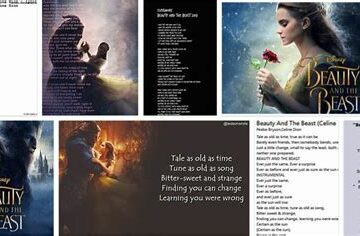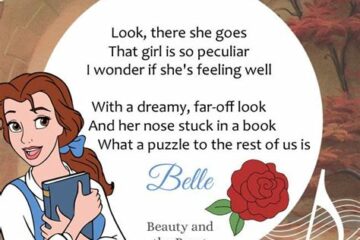
Disney Characters Who Changed The Game
In the enchanting world of Disney, characters have long served as catalysts for change, captivating audiences and redefining narratives across generations. From the charming princesses to the adventurous heroes, iconic Disney characters have revolutionized animation and storytelling, leaving an indelible mark on popular culture. This article delves into the significant influence of these beloved figures, exploring how they broke stereotypes, redefined gender roles, shaped global trends, and sparked conversations on pressing social issues. Join us on a journey through the evolution of Disney characters over the decades and discover how they continue to inspire and challenge societal norms, making an enduring impact in the hearts and minds of audiences worldwide.
Revolutionizing Animation: The Impact Of Iconic Disney Characters
Throughout the history of cinema, few entities have had as profound an effect on animation as Disney characters. From the early days of hand-drawn animation to today’s digitally crafted masterpieces, these characters have not only entertained audiences but have also transformed the way animation is perceived and produced.
One of the earliest icons, Mickey Mouse, introduced the world to the potential of synchronized sound in animation. His debut in Steamboat Willie in 1928 marked a watershed moment for the industry, proving that animation could be more than just visual art; it could offer an engaging auditory experience as well. This groundbreaking achievement set the stage for future Disney characters to explore richer storytelling techniques and emotional depth.
The introduction of full-length animated feature films with titles like Snow White and the Seven Dwarfs in 1937 further exemplified how Disney characters could revolutionize the narrative structure of animated storytelling. This film not only broke box office records but also paved the way for future films to embrace multi-dimensional characters and complex plots.
Moreover, Disney characters have consistently pushed the boundaries of artistic animation. Films such as The Lion King, Beauty and the Beast, and Frozen utilized pioneering animation techniques that have set standards in the industry. The combination of traditional hand-drawn animation and computer-generated imagery (CGI) highlighted how Disney characters continuously evolve with technology, allowing for increasingly imaginative worlds and more expressive characters.
The emotional impact these characters have on their audience is another significant aspect of their contribution to animation. With memorable songs, endearing personalities, and relatable struggles, Disney characters have become symbols of hope, courage, and resilience. They resonate with viewers of all ages, fostering a strong emotional connection and a sense of nostalgia.
The legacy of Disney characters goes beyond mere entertainment; they have altered the landscape of animation forever. By setting new artistic standards, introducing innovative techniques, and crafting compelling narratives, these beloved characters have truly revolutionized the art of animation, influencing generations of animators and audiences alike.
Breaking Stereotypes: Disney Characters Who Redefined Gender Roles
Throughout its history, Disney characters have played an instrumental role in challenging traditional gender norms and stereotypes. By portraying female characters who possess strength, independence, and complexity, Disney has contributed to the broader dialogue on gender equality and representation in popular culture.
For instance, characters like Mulan and Moana epitomize the break from the traditional damsel-in-distress archetype. Mulan, who disguises herself as a man to take her ailing father’s place in the army, showcases bravery, resourcefulness, and the power of self-determination. Moana, on the other hand, is not defined by a romantic interest but rather by her quest to save her people and discover her true identity. Both characters challenge the notion that women must fit into a particular role, demonstrating that courage and leadership are not tied to gender.
Additionally, male characters in Disney films have also evolved to break down stereotypes. Characters like Kristoff from Frozen demonstrate vulnerability and emotional depth, straying away from the typical portrayal of masculinity that emphasizes toughness and stoicism. This shift allows audiences to see that empathy and kindness are equally important traits in male characters.
These revolutionary portrayals send powerful messages to audiences of all ages, encouraging viewers to embrace a more inclusive perception of gender roles. By presenting multifaceted Disney characters who challenge societal norms, Disney continues to influence the way we think about gender in contemporary society.
Cultural Influence: How Disney Characters Shaped Global Trends
The cultural impact of Disney characters extends far beyond the borders of animated films. Over the years, these beloved characters have transcended entertainment, influencing fashion, language, and even social norms across various cultures. In this section, we will explore how Disney characters have become icons of global trends, shaping the way we perceive and engage with the world around us.
One of the most notable examples is the rise of characters like Elsa and Anna from Frozen. Their portrayal of sisterhood and independence resonated deeply with audiences, leading to a surge in popularity of winter-themed fashion and events. The film’s themes of empowerment, combined with its catchy soundtrack, solidified Elsa and Anna as cultural touchstones that inspired a new wave of merchandise, from costumes to home decor that reflect the snowy aesthetics of Arendelle.
Furthermore, Disney characters have also influenced language and social interactions. Phrases and quotes from films often become part of everyday vernacular; for instance, the acceptance of the phrase Let It Go has entered popular dialogue, a testament to how characters can influence emotional expression and cultural discourse.
Disney’s commitment to diversity in character representation has also played a role in shaping global trends. Characters like Moana, who represents Polynesian culture, have sparked greater interest in cultural appreciation and tourism in those regions. This holistic influence encourages audiences to explore and appreciate the richness of different cultures beyond the confines of the movie theater.
Moreover, the brand’s collaborations with fashion designers and products that incorporate Disney characters have made these figures veritable style icons. The recent rise of streetwear featuring classic Disney characters demonstrates how they can be reimagined to fit modern trends, illustrating their enduring relevance in the fashion landscape.
The cultural influence of Disney characters is an intricate tapestry woven into the fabric of global youth culture, often dictating trends in fashion, language, and social consciousness. This connection illustrates the profound power of storytelling and character development in shaping societal values and norms.
The Evolution Of Disney Characters Through The Decades
The transformation of Disney characters over the decades reflects broader societal changes and advancements in animation technology. From the animated shorts of the 1920s to the fully-realized 3D characters of today, Disney has continuously adapted its character designs and narratives to resonate with contemporary audiences.
In the early years, Disney characters like Mickey Mouse and Donald Duck were simplistic in design and often defined by slapstick humor. Their charm relied on exaggerated physical comedy and clear, wholesome personalities. As audiences grew more sophisticated, so too did Disney characters. The introduction of complex narratives in films like Snow White and the Seven Dwarfs marked the beginning of more nuanced character development.
By the 1990s, Disney expanded its storytelling techniques, featuring strong leads like Jasmine and Mulan, who challenged traditional gender roles. The characters were no longer just defined by their relationships to male characters but had their own distinct aspirations and agency.
In recent years, there has been a notable shift toward diversity and representation, with characters like Tiana, Moana, and Elsa breaking new ground. These modern Disney characters represent various cultures, backgrounds, and experiences, paving the way for richer storytelling that reflects the world’s diversity.
Overall, the evolution of Disney characters illustrates a remarkable journey from simple caricatures to multifaceted individuals, mirroring the changing values and expectations of audiences around the globe.
Disney Characters That Sparked Conversations On Important Social Issues
Throughout the years, Disney characters have not only entertained audiences but also served as catalysts for important social conversations. These characters have tackled issues such as mental health, representation, and environmentalism, effectively raising awareness and promoting discussions among viewers of all ages.
One prominent example is Disney’s portrayal of mental health in movies like Inside Out, which illustrates the complexities of emotions and mental well-being. This film helps normalize discussions around mental health, encouraging children and adults alike to understand and express their feelings more openly.
Moreover, films such as Moana and Frozen highlight themes of self-identity and empowerment. Moana, a strong female lead from Polynesian heritage, not only celebrates her culture but also embodies the importance of following one’s dreams against societal expectations. Similarly, Elsa’s journey in Frozen addresses self-acceptance and the fear of being different, resonating with many who struggle with their identities.
Additionally, the depiction of LGBTQ+ characters and relationships, such as LeFou in Beauty and the Beast, marks a significant step forward in representation. Although subtle, these portrayals contribute to broader conversations around sexuality and acceptance, reinforcing the idea that love in all forms is valid.
Furthermore, Wall-E presents an urgent commentary on environmental issues and consumerism. By telling the story of a small waste-collecting robot, the film compels viewers to reflect on their impact on Earth and encourages them to take action towards sustainability.
The legacy of Disney characters extends beyond entertainment; they serve as powerful tools for sparking dialogue about essential social issues. By embracing these themes, Disney continues to influence and inspire audiences worldwide to engage in meaningful conversations about the intricacies of human experience.
Top 10 Disney Characters You Didn’t Know About
December 30, 2024A Deep Dive Into Disney Princesses And Their Stories
December 29, 2024The Meaning Behind Beauty And Beast Lyrics
December 29, 2024Why Beauty And The Beast Is A Timeless Disney Classic
December 29, 2024The Role Of Disney Princesses In Modern Culture
December 29, 2024Exploring The Themes In Beauty And The Beast Lyrics
December 28, 2024
Leave a reply Cancel reply
Recommended
-
Beauty And The Beast Prologue Lyrics
August 23, 2023 -
The Feminine Archetype In Disney Princesses
December 20, 2024 -
Lyrics Beauty And The Beast Songs
August 24, 2023









